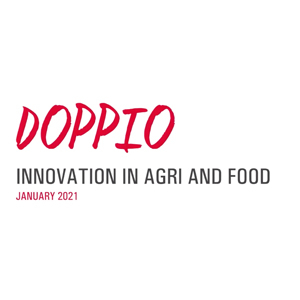Daniel works with a-connect as an IP in the EU from time to time and has recently joined another a-connect project. He has worked as an investor in Life Sciences Venture Capital for the last 3.5 years. During that time, he has also supported friends in founding Life Science companies, raising funds and working with industry players (“Strategics”). Recently co-founding three companies, he believes in working with people you trust and who bring insights from various perspectives.
Growing an idea, connecting people, capturing their experience and energy and finally bearing fruit is a lot of work, but is also a lot of fun
I have studied and worked as a medical doctor in hospitals, have also worked in consulting for some time, and in line management for worldwide organizations for more than a decade.
The things I have enjoyed most are reviving energy in patients, and building their confidence and a sustainable passion to regain a healthy life. It was turning concepts into reality, and as a team seeding a new organization and business within a large co-operation.
Becoming a Venture Capital investor wasn’t my plan, but it seemed to be a natural continuation of what was driving my daily business life until then – just with a different speed and frequency. Learning about cutting-edge innovations and meeting people with so much passion for their pioneering ideas and inventions every day is very energizing. Once you are invested, it’s stimulating and fun to ‘greenhouse’ ideas and provide the resources and expertise to grow them together!
Engaging the right investor is a diligent search for a needle in a haystack and luck … After that, it is all about trust
When I joined a Venture Capital firm, I had little experience about the inside – other than interacting with them as Board members of potential collaboration partners or acquisition targets. I did not know the dynamics and mechanics of how they operate on the inside. Now, when talking to founders and entrepreneurs, I think it is important for both sides to understand the driving forces that influence investment considerations. This enables a fair and balanced dialogue, as VCs want to know all the details of the person they talk to.
So, here are a few things you might not know when founding a company and raising money. For a start, VCs invest and manage other people’s money. We also invest our own money, but typically that is a fraction of the Fund. Funds are bound by certain restrictions as part of agreements with investors in the Fund (Limited Partners) – e.g. allocations for geographies, technologies, disease areas and modalities.
Unless they’re evergreens, Funds have lifetimes and cycles – typically 10 years of lifetime plus a potential extension of 2 years. In principle, the first half of this is for investing the money and the second half is for earning returns.
The earlier the Fund distributes returns to the investors, the better the performance of IRR. Early returns also help manage cash to operate the Fund along the management fee. Understanding the returns to date and cash needs might help in understanding the envisioned time horizon to exit for a new investment within the Fund lifecycle. Driving large returns not only helps the Fund return multiples to the Limited Partners, but also increases the investors’ possible participation, which is kicking in above a certain threshold.
Deal-flow at reputable VCs is high – we see several hundreds of investment opportunities per person each year. Even if quality differs, this still leaves a large number of potential high-quality investments.
Funds have a rough number of deals per year defined in the Funds investment model. Two to four are typical numbers out of several hundred opportunities per year, equaling less than 1–2% actual deals from the deal-flow. So, it is all about capturing attention for deeper engagement. Some VCs might just be too busy or be poor at responding to initial contacts.
Once invested, the person who invested typically joins the company as a Board member. While everyone would try to give this one investment all the attention it needs, at the end people are managing a portfolio of risk. Some have better capabilities at doing this than others.
While investors are evaluating each and every founder for their capabilities, it is important for founders to do the same. Venture investing is high-risk. While the investor is managing a portfolio of risks for one to two successes, this undertaking is the one and only for the individual founder.
It is about having the passion and energy to endure, but most importantly it is about building a relationship of trust.
Delivering value to the client by taking responsibility and focusing on what is best for the problem at hand
As an investor, I believe in delivering the most value by taking full responsibility as if it were my own business and resources at stake – as if it were me (as the co-founder) and the entrepreneur as partners in crime, merging as one team. The same holds true for consulting a client.
 |
Daniel is an entrepreneur, investor and advisor in the Life Science and Food industry.
He is co-founding three companies and was an Executive-in-Residence at TVM Capital Life Science in Munich for almost 4 years – amongst reviewing several hundred opportunities a year worldwide, closing a large pre-IPO investment with subsequent IPO, serving on the Board of Directors of three portfolio companies, and as part of new fund raising was instrumental for the first closing with a key European strategic investor. He had joined TVM from Novartis, where he spent 12 years leading various line functions across three Divisions including Global Franchise Head Strategic Marketing for Immunology & Infectious Diseases, Pharma in Basel, Switzerland, Global Head of Development, Diagnostics for Vaccines & Diagnostics in Emeryville, CA, USA and Global Head New Product & Portfolio Strategy Biopharmaceuticals for Sandoz in Holzkirchen / Munich, Germany. He oversaw and was a team member for multiple collaborations, licensing deals and acquisitions from academic to multi-billion dollar transactions, world-wide commercial launches and FDA / EMA / CFDA / ANVISA registrations with respective global clinical trials. Prior to Novartis he was at McKinsey & Company, Inc., was trained as an MD from Johannes-Gutenberg-University Mainz, Germany with clinical training in Germany, Switzerland and the USA (UC Davis Medical Center, Sacramento, CA) and was a scientific co-worker at the Institute for Occupational, Social and Environmental Medicine in Mainz for several years. |




